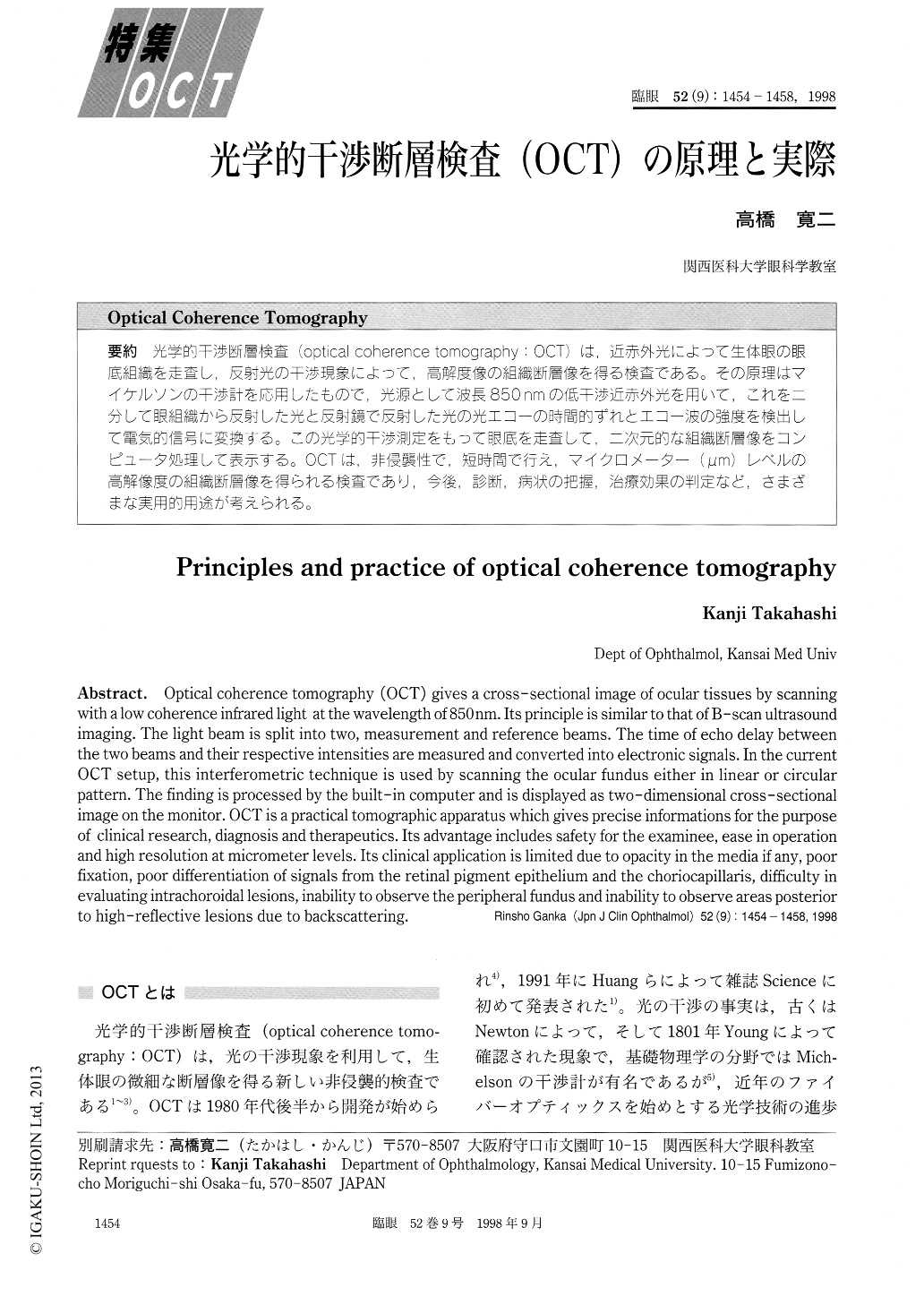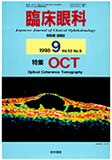Japanese
English
- 有料閲覧
- Abstract 文献概要
- 1ページ目 Look Inside
Optical Coherence Tomography
光学的干渉断層検査(Optical coherence tomography:OCT)は,近赤外光によって生体眼の眼底組織を走査し,反射光の干渉現象によって,高解度像の組織断層像を得る検査である。その原理はマイケルソンの干渉計を応用したもので、光源として波長850nmの低干渉近赤外光を用いて,これを二分して眼組織から反射した光と反射鏡で反射した光の光エコーの時間的ずれとエコー波の強度を検出して電気的信号に変換する。この光学的干渉測定をもって眼底を走査して,二次元的な組織断層像をコンピュータ処理して表示する。OCTは,非侵襲性で,短時間で行え,マイクロメーター(μm)レベルの高解像度の組織断層像を得られる検査であり,今後,診断,病状の把握,治療効果の判定など,さまざまな実用的用途が考えられる。
Optical coherence tomography (OCT) gives a cross-sectional image of ocular tissues by scanning with a low coherence infrared light at the wavelength of 850nm. Its principle is similar to that of B-scan ultrasound imaging. The light beam is split into two, measurement and reference beams. The time of echo delay between the two beams and their respective intensities are measured and converted into electronic signals. In the current OCT setup, this interferometric technique is used by scanning the ocular fundus either in linear or circular pattern. The finding is processed by the built-in computer and is displayed as two-dimensional cross-sectional image on the monitor. OCT is a practical tomographic apparatus which gives precise informations for the purpose of clinical research, diagnosis and therapeutics. Its advantage includes safety for the examinee, ease in operation and high resolution at micrometer levels. Its clinical application is limited due to opacity in the media if any, poor fixation, poor differentiation of signals from the retinal pigment epithelium and the choriocapillaris, difficulty in evaluating intrachoroidal lesions, inability to observe the peripheral fundus and inability to observe areas posterior to high-reflective lesions due to backscattering.

Copyright © 1998, Igaku-Shoin Ltd. All rights reserved.


